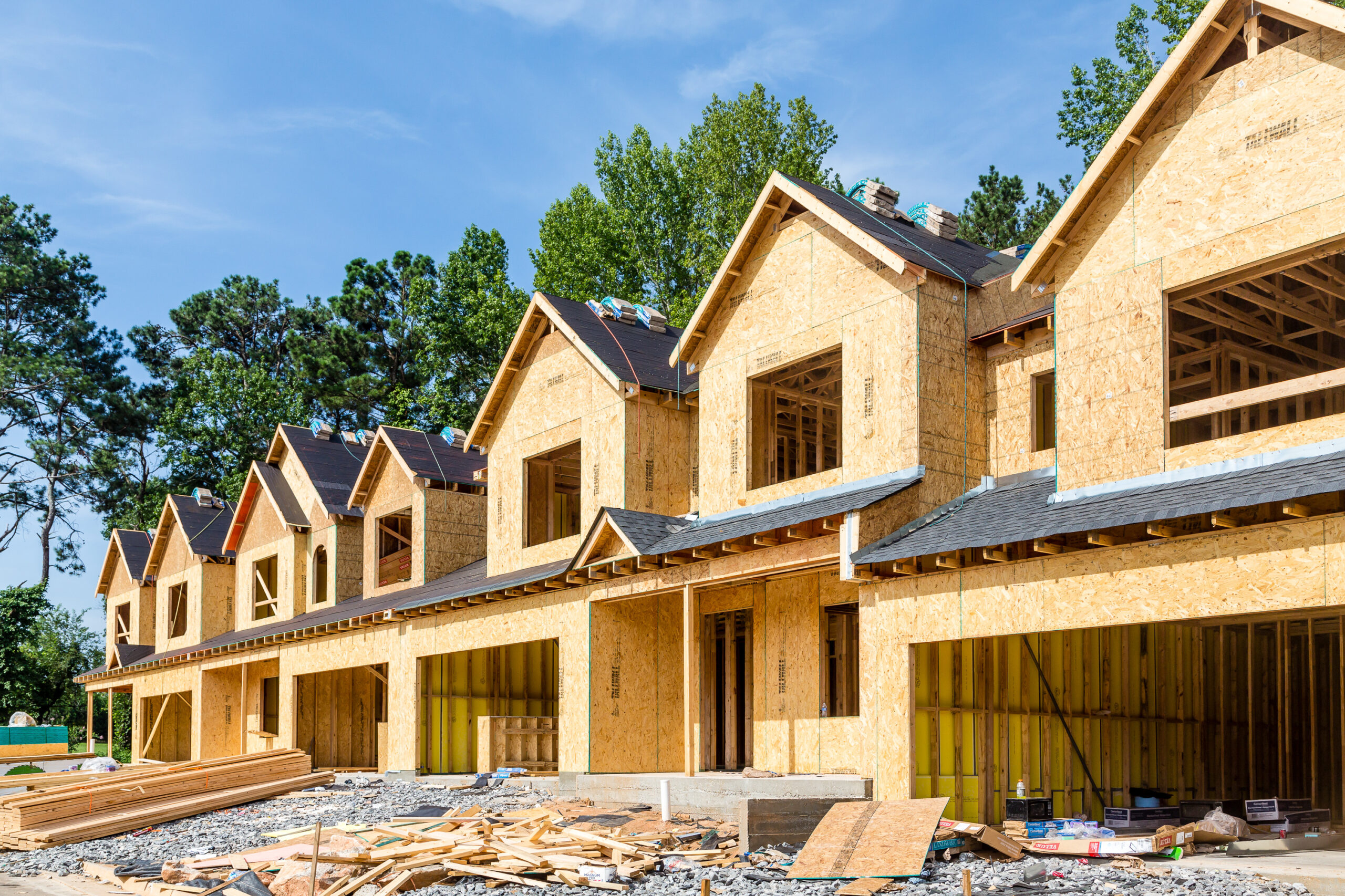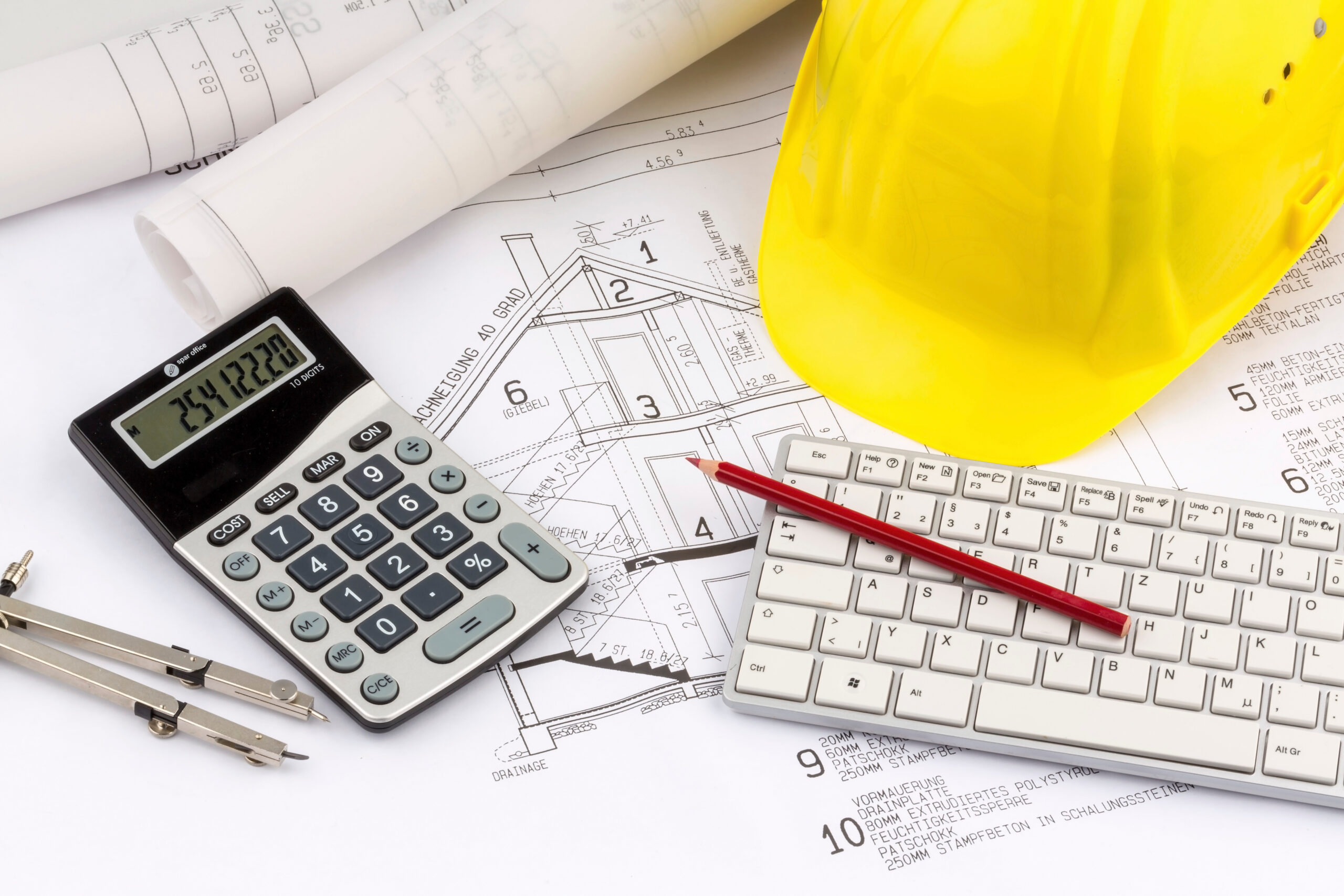How does the ripple effect of new housing development shape small businesses, schools, and local services? What ripple effect benefits do affordable housing projects create for communities? Can the ripple effect of housing growth transform long-term economic stability?
The ripple effect of new housing goes far beyond bricks and mortar—it fuels economic growth that touches every corner of community life. Each development not only generates jobs during construction but also creates ongoing demand for goods, services, and infrastructure. Small businesses thrive with expanded customer bases, schools gain stronger funding streams, and local services adapt to meet the needs of growing populations. When well-planned, these developments become lasting economic engines that create opportunity and stability.
Affordable housing projects amplify this ripple effect by freeing up household income for local spending, expanding job opportunities, and strengthening tax bases that fund public services. The result is a cycle of growth where families, businesses, and municipalities all benefit. By understanding and leveraging the ripple effect, policymakers, developers, and communities can ensure that housing development serves as a cornerstone of sustainable economic prosperity.
As an industry veteran who has spent decades studying community development patterns, I’ve witnessed firsthand how new housing developments serve as economic catalysts that transform entire communities. The relationship between housing construction and local economic growth is far more intricate and powerful than most people realize. Every new home, apartment complex, or affordable housing development sets a complex ripple effect in motion that touches every aspect of community life.
The “ripple effect” in economics refers to the cascading impact that occurs when an initial economic event creates waves of secondary and tertiary effects throughout a local economy. When housing markets boom, they can lift entire industries along with them. Conversely, when they falter, the shockwaves can be felt across various sectors of the economy. This interconnectedness is a powerful force that can shape the economic landscape in ways both obvious and subtle.
In this article, we’ll explore how these ripple effects manifest across three critical sectors of community life: small businesses, schools, and local services. We will also examine how strategic housing development can serve as a cornerstone of comprehensive economic development.
Table of Contents:
The Ripple Effect Concept in Housing
Supply Chain and Service Expansion
Public Amenities and Recreation
Interconnected Economic Effects
The Ripple Effect Concept in Housing
New housing developments serve as particularly potent catalysts for the ripple effect because they simultaneously address multiple community needs while generating sustained economic activity. Unlike temporary economic stimuli, housing developments create permanent changes in population density, consumer demand, and infrastructure utilization that reverberate through communities for decades.
The role of population growth in local economic dynamics is immeasurable. When more people are looking to buy homes, the need for new houses, condos, and apartments skyrockets. This surge in demand fuels construction projects, from sprawling suburban developments to towering urban high-rises. But the impact extends far beyond the construction phase. Each new household represents a cluster of ongoing economic needs: groceries, healthcare, education, transportation, and countless other goods and services that sustain local businesses and create employment opportunities.
The economic multiplier effect of housing is particularly pronounced in affordable housing developments. According to a report by the Joint Center for Housing Studies of Harvard University, households with affordable housing spend five times more on healthcare and one-third more on food than severely cost-burdened peers. Likewise, for every dollar spent on housing construction, another $1.30 is generated in additional economic activity, according to data from the Economic Policy Institute.
Impact on Small Businesses
The most immediate and visible impact of new housing development on small businesses is the expansion of the customer base. The influx of workers and the need for materials and services create opportunities for local businesses to thrive. For example, restaurants, cafes, and retail stores often see increased patronage from construction workers and professionals involved in the project. This effect continues long after construction is complete, as new residents establish spending patterns that sustain local commerce.
In countless communities throughout the country, every 100 new housing units typically generates over $2 million in annual consumer spending, depending on household income levels and local cost of living. This spending flows directly into local retailers, service providers, and restaurants, creating what economists call a “demand shock” that can revitalize previously struggling commercial districts.
The impact is particularly pronounced for businesses providing essential services. Grocery stores, pharmacies, dry cleaners, and personal service providers often see immediate increases in revenue as new households establish their daily routines. When families aren’t overburdened by rent, they have more income to spend on local goods and services, creating a positive feedback loop of economic activity.
Opportunities for niche and specialty shops emerge as population density reaches critical thresholds. A neighborhood might gain its first coffee shop when it reaches 500 households, attract a bookstore at 800 households, or support a specialty fitness studio at 1,200 households. These businesses, in turn, contribute to neighborhood character and quality of life, making the area more attractive to additional residents and creating a virtuous cycle of growth.
Supply Chain and Service Expansion
I can’t stress enough how the housing ripple effect extends beyond direct consumer spending to encompass the entire supply chain ecosystem. Local suppliers of construction materials and equipment can experience a surge in demand, leading to increased sales and growth. During the construction phase, this includes building supply companies, equipment rental firms, and specialized contractors. However, the ongoing impact on supply chains continues indefinitely as new residents require home furnishings, appliances, maintenance services, and periodic renovations.
Growth in delivery services, home maintenance, and other support sectors is a predictable outcome of housing development. The rise of e-commerce and on-demand services has amplified this effect. New residential areas require last-mile delivery services, landscaping contractors, home security providers, and internet and cable installation technicians. Each of these service sectors, in turn, requires local suppliers, administrative support, and specialized equipment, creating additional layers of economic activity.
Competitive Landscape Changes
The entry of new businesses due to market opportunity reshapes local competitive dynamics in complex ways. Established businesses face new competition but also benefit from increased foot traffic and consumer spending. The key to success in these evolving markets is adaptation and innovation. Businesses that recognize changing demographics and adjust their offerings accordingly often experience significant growth.
Potential pressures on existing businesses to innovate or adapt can be challenging but ultimately beneficial for consumers and the broader economy. When local contractors are hired for projects, they not only gain business but also contribute to the broader economic health of the area. These contractors often reinvest their earnings into their businesses and communities, creating a cycle of economic activity that benefits everyone.
The competitive landscape changes most dramatically in service industries where market saturation points vary significantly. While a neighborhood might support multiple restaurants or personal service providers, it might have capacity for only one hardware store or pharmacy. Understanding these market dynamics is crucial for both existing business owners and prospective entrepreneurs seeking to capitalize on residential growth.
Impact on Schools
One of the most significant concerns about new housing development is its potential impact on school enrollment. However, despite public perception, new housing development doesn’t significantly increase school enrollment. In fact, many communities see a net fiscal benefit from new housing construction.
Increased student numbers, when they do occur, necessitate adjustments to class sizes and staffing levels, but these changes are typically manageable and often beneficial for educational programming. Schools with growing enrollment can justify specialized programs, advanced courses, and extracurricular activities that might not be viable in smaller student populations.
Funding Changes
One of the most positive aspects of the housing-education relationship is how property taxes from new housing can increase school budgets. New residential development expands the local property tax base, which in most states serves as the primary funding mechanism for public schools. According to NAHB, building 100 affordable rental homes generates approximately $11.7 million in local income, $2.2 million in taxes and other revenue for local governments, and 161 local jobs in the first year alone.
Balancing resources between new and existing educational needs requires careful planning and community input. School districts must weigh immediate infrastructure needs against long-term educational programming goals. The additional revenue from new housing development often enables districts to reduce class sizes, update technology, and expand support services that benefit all students, not just those from new housing.
Program Development
Expanded extracurricular offerings and specialized academic programs often emerge as enrollment and funding reach critical thresholds. For example, a high school might add Advanced Placement courses when it reaches 800 students, introduce a robotics program with 1,000 students, or justify a full-time arts teacher with 1,200 students. These programmatic enhancements improve educational outcomes and make districts more attractive to families.
Increased partnerships with local businesses and organizations represent another benefit of residential growth. As the local business community expands due to housing development, schools gain access to internship opportunities, guest speakers, and potential employers for graduates. With affordable housing in the picture, neighborhoods and cities can ultimately reduce turnover rates, ensuring both stability for workers and the staffing needed for organizations and businesses to remain open and accessible for all local residents.
These partnerships extend beyond traditional business relationships, including healthcare providers, cultural institutions, and nonprofit organizations that establish themselves in growing communities. The result is a richer educational ecosystem that better prepares students for adult success while strengthening community connections.
Impact on Local Services
When I explain the effects of new housing in communities, I often mention the increased need for utilities, roads, public transportation, and waste management. These facets represent both a challenge and an opportunity for local governments in almost every instance.
Water and sewer systems must be expanded or upgraded to serve new residential areas. Electric and gas utilities need additional capacity and distribution networks. Telecommunications infrastructure requires expansion to meet modern connectivity demands. While these infrastructure investments require significant upfront capital, they often serve broader community needs and can stimulate additional economic development.
Transportation infrastructure improvements, including roads, traffic signals, and public transit, benefit entire communities while serving new residential areas. These improvements can reduce commute times, improve safety, and make previously inaccessible areas available for development. Well-managed and maintained infrastructure enables the attraction and retention of top-level businesses and industries.
Strain on emergency services such as police, fire, and healthcare requires careful planning and resource allocation. Additional housing units increase call volumes and response times, necessitating strategic placement of emergency services facilities and personnel. However, the tax revenue generated by new housing typically exceeds the cost of providing these services, creating net fiscal benefits for communities.
Public Amenities and Recreation
Growth in demand for parks, libraries, and cultural centers accompanies residential development as new residents seek quality-of-life amenities. Communities with well-planned amenity systems use housing development as an opportunity to expand and improve facilities that serve the entire population. A new residential area might justify a branch library, neighborhood park, or community center that becomes a focal point for civic life.
Expanding community events and recreational programs could create opportunities for social cohesion and local business development. Farmers’ markets, arts festivals, and recreational leagues generate economic activity while building community identity. These programs often rely on volunteer participation and civic engagement, which increases with population density.
I think it’s clear that the economic impact of recreational amenities extends beyond direct spending to include property value enhancement and business attraction benefits. Communities with robust recreational offerings attract residents and businesses that value quality of life, creating competitive advantages in regional economic development.
Service Employment Growth
The creation of new public service jobs to meet community needs also provides career opportunities for local residents while ensuring adequate service delivery. Construction workers generally live close to the construction site and thus spend a substantial part of their wages in the local community. Similarly, ongoing public service employment creates stable, local jobs that support community economic development.
Opportunities for local workforce development emerge as service demands create career pathways in fields such as public administration, emergency services, education, and infrastructure maintenance. Many of these positions offer competitive benefits and advancement opportunities while contributing directly to community well-being.
The multiplier effect of public sector employment is particularly strong because these workers tend to be long-term community residents who invest in local businesses, schools, and civic organizations. As I’ve explained throughout my career, when residents are not burdened by housing instability, they’re more likely to stay employed and miss fewer work days, a critical advantage for businesses and economies alike.
Interconnected Economic Effects
Many people are surprised to learn that growth in one sector fuels growth in others, illustrating the power of the ripple effect in action. New housing creates demand for retail services, which requires additional employees, who need places to live, which creates demand for more housing. When properly managed, this feedback loop creates sustainable economic growth that benefits entire communities.
Feedback loops between thriving schools and housing demand demonstrate how quality of life improvements attract additional residents and businesses. Excellent schools increase property values, attract families, and create demand for family-oriented businesses and services. This creates a self-reinforcing cycle that can transform communities over time.
Well-designed, well-managed affordable housing can stabilize neighborhoods and lead to increased property values over time. Research by the Trulia real estate site found that affordable housing developments have no adverse effect on the property values of nearby homes and can even contribute to an uptick in value in some cases.
The balance between short-term construction boosts and long-term sustainable growth requires careful planning and community engagement. While construction activity provides immediate economic benefits, the lasting impact depends on creating attractive, well-functioning neighborhoods that continue to draw residents and businesses over time. When families spend less on housing, they have more to spend on goods and services. These transactions fuel community-wide economic growth by bolstering local businesses and the local workforce. When housing costs align with incomes, people have more purchasing power to inject into local businesses, spurring job growth and generating economic activity.
The ripple effect of affordable housing development is particularly powerful because it addresses multiple community needs simultaneously while generating sustained economic activity. By providing stable, affordable homes, these developments free up household income for local spending, create construction and permanent employment opportunities, and generate tax revenue that supports public services and infrastructure improvements.
Conclusion
The economic ripple effect of new housing development extends far beyond the initial construction period to create lasting changes in community economic dynamics. Through my years of studying these patterns, I’ve consistently observed that well-planned housing development serves as a catalyst for broader economic growth that benefits businesses, schools, and public services alike.
The key to maximizing these benefits lies in understanding the interconnected nature of community economic systems and planning accordingly. Communities that anticipate infrastructure needs, support local business development, and invest in quality educational and recreational amenities create positive feedback loops that sustain economic growth over time.
The lesson is clear for policymakers, developers, and community leaders: housing development should be viewed not as an isolated activity but as a cornerstone of a comprehensive economic development strategy. When executed thoughtfully, with attention to both immediate needs and long-term community vision, new housing development creates ripple effects that strengthen communities for generations to come.




